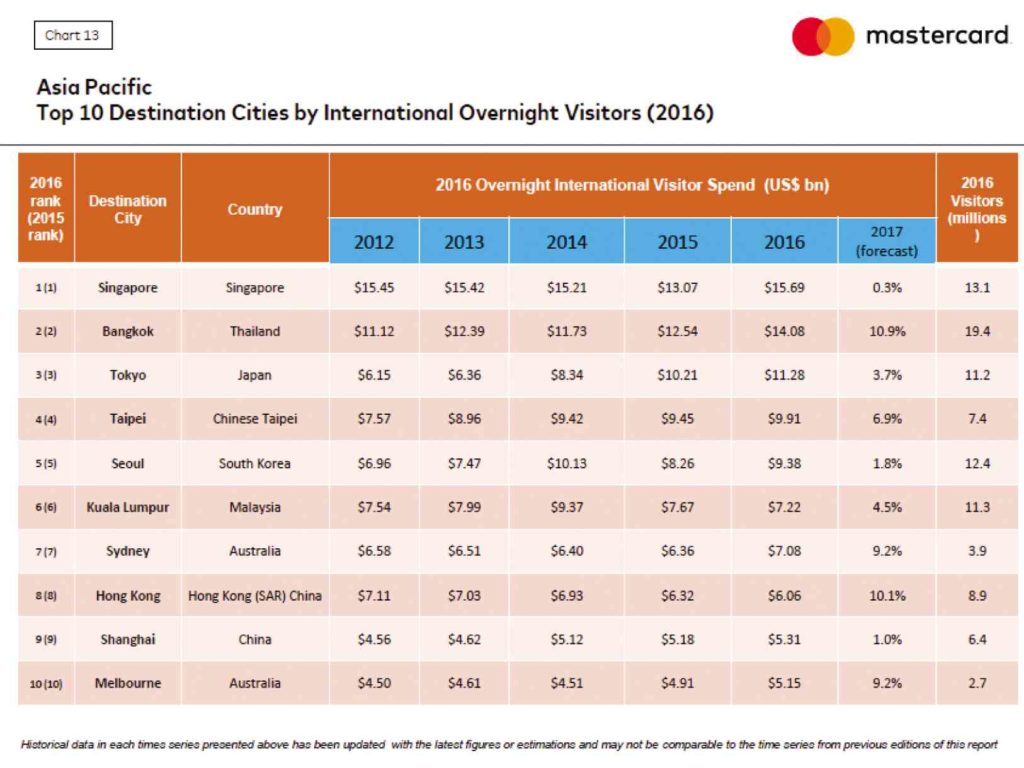Asia-Pacific tourists on spending binge
Singapore—Tourist spending grew the fastest in Asia-Pacific in 2016, outpacing visitor arrival expenditures in Europe and North America, Mastercard’s Global Destinations Cities Index 2017 showed.
Spending of tourists in key cities in Asia Pacific reached $91.2 billion in 2016, edging out Europe, which raked in $74.7 billion in tourist expenditure, and North America, which generated some $55 billion.
This was mainly driven by the shift in visitor spending “from things to experiences,” especially of Chinese tourists, Eric Schneider, vice president of Mastercard advisors in Asia Pacific, told Southeast Asian journalists here recently.
Of the top 10 global destinations in 2016, five cities are from Asia-Pacific, led by Bangkok. And China was the top source of tourists in all five destinations, Schneider said.
Chinese tourists surpassed Indonesian arrivals in Singapore, as well as Koreans visitors in Tokyo for the first time in 2016, he said.
He noted that “Asia-Pacific is where the growth is happening” and that the significant growth in tourism and travel spending in Asia-Pacific outpaced that in the rest of the world.
“If you go back to 1995, Asia was distantly behind Europe as the top tourist destination. Asia was bouncing around with North America until 2010 when Asia-Pacific overtook North America. And finally in 2015, Asia-Pacific overtook Europe,” Schneider said.
The Global Destinations Cities Index showed that Bangkok remained the top tourist destination in 2016, with 19.4 million of visitor arrivals in the city. The number is slightly lower from the 19.6 tourists in 2015.
Other top destinations included Singapore (13.1 million tourists), Seoul (12.4 million tourists), Kuala Lumpur (11.3 million tourists) and Tokyo (11.2 million tourists).
The same study broke down the kinds of “experiential spending” by tourists in the top Asian destinations.
Travellers in Kuala Lumpur spent most of their budget for leisure, while tourists in South Korea shell out more on shopping. Singapore tourists were drawn more to its dining experience.
With the rise of international tourism in the Asia-Pacific region, “governments and private stakeholders should continue to invest in smart networks and infrastructures that provide seamless experiences for tourists and residents,” Schneider said.
“But other rising economies, such as the Philippines, Indonesia and Vietnam have a lot of runway to grow their middle class and their outbound tourist spending,” Schneider said.

